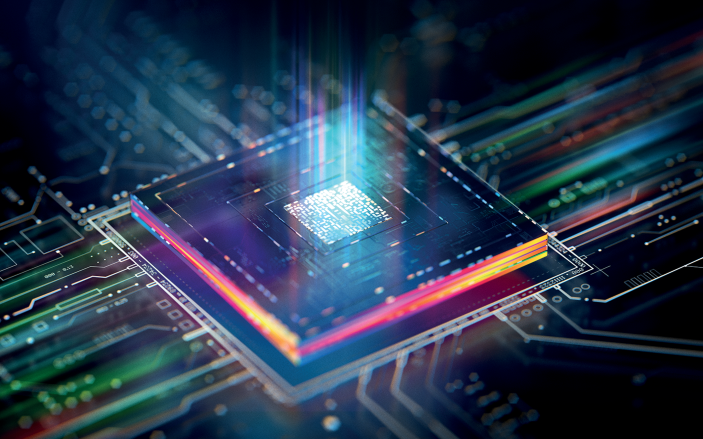We highlight the vibrant discussions on quantum computing and quantum algorithms that took place at the 2024 American Physical Society March Meeting and invite submissions that notably drive the field of quantum information science forward.
The American Physical Society (APS) March Meeting is arguably one of the largest annual physics conferences of the world, and this year’s edition — which was held in Minneapolis, USA on 3–8 March — hosted over 10,000 scientists and students from around the globe, offering a rich platform to exchange novel ideas and breakthroughs that advance the field of physics. The meeting undoubtedly covered a comprehensive range of topics, of which many are of particular interest to our computational science community, such as electronic structure of materials, the dynamics of complex systems, and self-driving materials labs. Here, we focus on the stimulating discussions on quantum information science and its applications to various domains, given the growing interest and the multitude of avenues of future research in this area.

Credit: da-kuk / E+ / Getty Images
While quantum information science1 has recently seen myriad relevant advancements, many challenges still persist. A pressing issue in the field is the high level of noise in quantum bits (qubits), resulting in an error rate of about 10–2 to 10–3, which is much larger than the ideal error rate (10–15) required for the successful implementation of large-scale quantum algorithms in practical applications. As such, overcoming the effects of noise remains the foremost challenge for advancing the field. At the APS meeting, a total of 14 sessions — possibly the most attended ones in the event, at least to the eye of our editor in attendance — were devoted to quantum error correction (QEC) and quantum error mitigation. For instance, the discussions surrounding QEC primarily focused on reducing time and qubit overheads. Among the numerous candidates, low-density parity-check codes emerged as one of the popular protocols for achieving low-overhead error correction2. During the Kavli Foundation Special Symposium, Mikhail Lukin, a professor of physics at Harvard University, emphasized the importance of optimized error-correction codes and highlighted the need for co-designing these codes with quantum algorithms and native hardware capabilities in order to achieve fault-tolerant quantum computation.
Another important and well-received focus at the conference was the application of quantum algorithms in noisy quantum computers, with the goal of demonstrating advantages of quantum computing in practical applications prior to achieving fault-tolerance. One such algorithm is quantum machine learning (QML)3, which embeds machine learning within the framework of quantum mechanics. A pivotal point of discussion in the conference revolved around how to practically harness QML’s strengths, such as its low training cost and efficient scalability. While QML has the potential to accelerate data analysis, especially when applied to quantum data from sources such as quantum sensors3, understanding its limitations and developing theoretically sound approaches are imperative tasks for achieving advantage in practical problems. In addition, proper considerations of practical constraints, such as bottlenecks in quantum data loading and the effects of noise, are equivalently important for algorithm design.
Efforts from the industry for advancing quantum information technology did not go unnoticed during the 2024 APS March Meeting either. Companies such as Google Quantum AI, AWS Center for Quantum Computing, IBM Quantum, Quantinuum, and QuEra Computing Inc. — among others — have been making substantial contributions to various aspects of quantum computing, from software and algorithm design to hardware advancements, such as the logical quantum processor with neural atom array4 and the 32-qubit trapped-ion system5. Furthermore, industrial partners play a crucial role in helping to identify pertinent problems for quantum algorithms, including, but not limited to, in the domains of physical sciences6,7, biological sciences8, and finance9.
At Nature Computational Science, we are keen on publishing studies that span a wide range of topics within quantum information science. Our interest extends from fundamental research aimed at the realization of quantum computing, including the development of codes such as QEC, to studies that deepen our understanding of quantum algorithms and contribute to the broader theoretical framework of quantum computing10,11. Furthermore, we are interested in well-motivated studies that apply quantum algorithms on real quantum computers for solving real-world, practical problems, showcasing clear advantages derived from quantum effects12,13. By fostering an ongoing dialogue on quantum computing and its implications in diverse fields, Nature Computational Science strives to contribute to the advancement of quantum information science and its transformative impact on society.
References
-
Nat. Comput. Sci. 2, 687–688 (2022).
-
Bravyi, S. et al. Nature 627, 778–782 (2024).
Google Scholar
-
Cerezo, M. et al. Nat. Comput. Sci. 2, 567–576 (2022).
Google Scholar
-
Bluvstein, D. et al. Nature 626, 58–65 (2024).
Google Scholar
-
Moses, S. A. et al. Phys. Rev. X 13, 041052 (2023).
-
Huggins, W. J. et al. Nature 603, 416–420 (2022).
Google Scholar
-
Google AI Quantum and Collaborators et al. Science 369, 1084–1089 (2020).
-
Emani, P. S. et al. Nat. Methods 18, 701–709 (2021).
Google Scholar
-
Herman, D. et al. Nat. Rev. Phys. 5, 450–465 (2023).
Google Scholar
-
Abbas, A. et al. Nat. Comput. Sci. 1, 403–409 (2021).
Google Scholar
-
Larocca, M. et al. Nat. Comput. Sci. 3, 542–551 (2023).
Google Scholar
-
Ren, W. et al. Nat. Comput. Sci. 2, 711–717 (2022).
Google Scholar
-
Yu, S. et al. Nat. Comput. Sci. 3, 839–848 (2023).
Google Scholar
Rights and permissions
Reprints and permissions
About this article
Cite this article
Harnessing quantum information to advance computing.
Nat Comput Sci 4, 251–252 (2024). https://doi.org/10.1038/s43588-024-00628-1
-
Published: 26 April 2024
-
Issue Date: April 2024
-
DOI: https://doi.org/10.1038/s43588-024-00628-1
